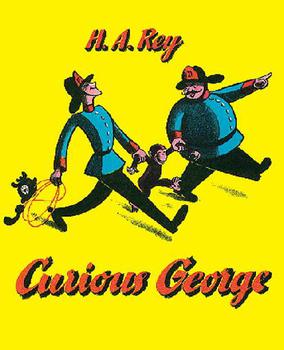My Childhood Books Were Not Very Diverse
- Anna Hogarth

- Jul 23, 2020
- 4 min read
This summer, I came across some information about the lack of diversity in children's books. I am biracial and have become increasingly more aware about representation in the environments I am in. Often when I am in guided discussions around race, facilitators have us reflect on how we were raised to think about our and others' racial group. In an effort to see how I was educated about race as a kid, I have decided to analyze my childhood books.
Currently, the diversity in children's books is somewhat promising. According to the Cooperative Children's Book Center at the University of Wisconsin, after studying over 3,600 children's books in 2018, researchers found that 21.6% of books were written by people of color and 28% were about people of color. However, I wanted to know about the books people my age were reading as kids. In the year I was born, 2000, only 7.8-8.6% of books were about people of color. Those numbers are concerning.
I decided to study the 46 fiction books I had on my bookshelf. I left out the nonfiction books because of the power of storytelling that fiction books have. Children can either see themselves represented in the story or will learn about another child's story. It is important for children of color to see themselves in literature, that their experiences are valid and visible, and that their experiences are just as important as a white child's.
Here are my results!
Author

In the chart, "assumed" means that I did some light digging on the internet to identify their race, and if I could find nothing, I relied on their name and photos to guess. The category "Asian" consists of Chinese, Vietnamese, Indian, Japanese, Taiwanese, and Korean.

Here, "assumed" means that I used their name and pronouns found in author bios or online to guess their gender.

35 out of the 46 books had main characters.

This one shocked me. After looking closely at the data, I noticed that when it comes to having animals as the main character, they were almost always a male. Only one animal in my collection of nine was a female!
General representation

Here, I wanted to see how many books showed examples of racially diverse communities. Was the Asian main character interacting with people of many races, or were they living in Asia with only other Asians? As someone who does not live in Asia or in all Asian communities, I wanted to see if I had racially diverse American communities represented in my books.
Reflection
None of my books were written by or written about Black or Latinx people as main characters. The only book I distinctly remember reading that featured a Black child was The Snowy Day by Ezra Jack Keats, and I don't even own it.
I had a pretty decent amount of books featuring Asian characters. There were a few that I felt especially connected to, below, which featured a Chinese immigrant child or a Chinese child of immigrant parents. With those three books I could see that I can be proud of my Chinese identity after never having been to China.
Some of my books carried problematic themes. These ones were generally a little older and carried messages of colonialism or racial stereotypes. The most problematic three in my collection are below.
One of the quotes from The Story of Babar is "He had just returned from the big city, he has learned so much living among men, let us crown him King." To me, this book gives the impression that elephants, who live in less developed countries in Africa and Asia, needed to become civilized by white people and then returned to their homeland to educate their peers. What does a white kid reading this think about people from those countries?
After reflecting, it seems like my children's books were not that diverse. There was decent Asian representation, as well as representation from multiple Asian countries. However, a majority of all of my books had males as main characters, and there were some racial groups left out. I did not even look for other characteristics, like family structure, mention of social justice or equity issues, class, mental health, and ability status.
Summary
It is critical to provide representation and diversity on a child's bookshelf. This is especially important for children who have not gone to elementary school yet. Once I went to grade school I was exposed to more books by my teachers and I had a huge library of books to choose from.
Before then, my book choices were mostly left to the whim of my family and friends. My parents, especially my mom, provided me with many books about Asian people and Buddhist ideas. If they hadn't had taken that conscious effort, then even more of my books would have probably been about white people.
Now that the majority of the youth American population are soon going to be people of color, we should encourage the children's book community to match these numbers as well as pick more diverse books for our young friends to provide a rich world of stories that represent those of the readers.














Comments